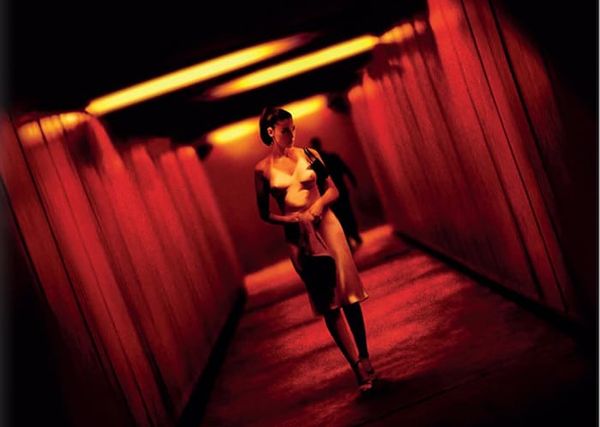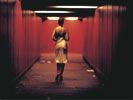Eye For Film >> Movies >> Irreversible (2002) Film Review

Irreversible is a graphically violent film that intentionally leaves nothing to the imagination, including watching a man's face disintegrate as it is bashed in with a fire extinguisher, and a very violent nine-minute, single shot rape scene (with one of France's top actresses). The film has totally divided viewers. Many people will walk out rather than watch the whole film - which would make it difficult to assess, especially as it goes through major shifts of mood and tone that are intrinsic to the whole.
Irreversible is certainly a serious piece of film making. The use of flashbacks is sequential - we see the 'end' scene first, then the scene that led up to it, and so on. It is full of powerful images and innovative techniques. It can be described as a journey from Hell to Heaven. The theme is 'time destructs everything' and, starting in reverse by showing, at the beginning of the film, terrible scenes that are the conclusion of events we have yet to witness in flashback, it slowly moves from nightmare to happiness.

The first 'nightmare' scene is in a gay sex club somewhere in France. The soundtrack has a steady note that reverberates insistently like an audio depiction of a throbbing headache. The camera, hand held, thrashes wildly around in the dimly red-lit areas, catching up with and following the two men out for revenge. It slows somewhat to focus on the apparent object of their anger. The initial attack is thwarted, but the second of the two men takes over and pummels the victim's head to a pulp - and we see the face and head disintegrate under blows as it is mercilessly bashed with a fire extinguisher (an unusual and unexpected use of CGI).
Next we follow the attackers before they reach the nightclub. We learn that they are hunting the perpetrator of a violent rape on the girlfriend of one of them. The film is still not easy to watch, but the jerkiness of the camera slows enough to allow us the indulgence of following some sort of plot. The anger of the two men as they try to trace their intended victim is still uncomfortable viewing.
Next we see the rape scene. This time the camera is motionless. The movement and struggle of the victim - for nine long minutes - becomes paramount. The graphic nature is mostly confined to the violence. There is no penetration seen, and very little exposure except a momentary glimpse of a breast. The attacker's penis, seen briefly at the end of the act, was added digitally (explained the Director in a Q & A discussion at its British premiere). After the rape, the attacker beats the victim into a bloody coma.
Next we enter a scene that is slightly more recognisable as ordinary life, although not exactly pleasurable to watch. It is a party where the future victim and her boyfriend and another man are present. The scene is hedonistic, with drink, drugs and a hedonistic abandon which the woman eventually finds distasteful and she leaves early.
As the story unfolds backwards, ever into scenes that are more pleasing on the ear and eye, we see the future rape victim in an ordinary and delightful relationship with one of the men. It turns out that the other man was her former boyfriend. In a beautiful few scene of domesticity she takes a pregnancy test and visits an open air park area where children are playing delightfully on the grass, running in and out of a fountain. The camera work, having gone slowly from barely watchable to enjoyable, takes us on a heavenly treat as we watch the children from above in play that seems almost like a cinematic dance sequence.
We put all the pieces together in the knowledge that all traces of humanity will be wiped away (as we have seen the 'ending'). The film finishes with several minutes of strobe light, returning to the initial druggy hand held camera work with its concentration on light rather than specific form.
There are many haunting comparison elements between the horrific scenes and the pleasant ones. For instance, the victim's mouth is held shut by her attacker's hand during most of the rape. Earlier in the story (and later in the film), her mouth is held shut in a fun-loving way by her boyfriend during sex-play. Some of the lines of dialogue similarly echo and cause interesting resonances.
But are these technical innovations enough to justify the film? Quite possibly, though as art and a study a study of sexual repression and violence rather than as a statement about rape. The rape scene conveys the horror of rape to women in a way that underlines the importance of not walking home through a subway in a very disreputable area alone at night, but it fails to show the traumatic effect on the woman's life after she has survived it, and the emphasis on the violence (the victim is beaten into a coma afterwards) maybe blurs the horror of the actual act of rape, or suggests that rape not involving violence is not so bad. The audience focus in Baise Moi, for instance (a low budget film of limited artistic merit) is aimed squarely at the act of rape rather than at the violence that includes rape, at the terrible nature of the act of force and invasion of autonomy, and the cathartic development of the victim into a serial killer then seems both a realistic story and a frighteningly attributable psychosis. Irreversible, by comparison, is a story of revenge which, at its most basic level, simply emphasizes male violence and physical violence as a reaction and a means to an end.
Interestingly, during the rape scene in the subway, a man appears in the background, starts to enter the subway and thinks better of it and leaves. This is perhaps like those members of the audience who find the initial half of the film so distasteful that they leave. I stayed to the end - not because I felt brave in confronting the graphic violence - but because I was interested in the issues of censorship that had been raised and because the director has reassured us that the ending would in some way make the film better. It did, but only deep reflection on the film convinced me of its value as art. At first viewing, I wasn't so much shocked as oppressed with tedium, with a listlessness that goes with an insufficiently engaging story or characters, with cinematic devices that are not, in themselves, enough to carry a movie. I also made the mistake of sitting too close, where the disorientating strobe and backbeat overwhelm the consciousness so much that it is hard to view anything dispassionately. Irreversible is not an easy film, but a valuable one.
Reviewed on: 05 Oct 2006




















